Last updated on April 15th, 2024
Featured image: A woman celebrates making it to Antarctica / Photo by twenty20photos
Visiting the ‘last great nature preserve’ on our planet
By Carolyn Ray, Editor-in-Chief, JourneyWoman
Years ago, in Ushuaia, Argentina, I stood at the port and watched large expedition ships cross the Beagle Channel, heading out into the open sea toward Antarctica. The ocean felt limitless—I could only see water and small outcroppings of rock, far into the horizon. Even there, the multitude of seals, birds and wildlife was astonishing. I can only imagine what it would be like in the world’s seventh continent, in a place that is regarded as the last great nature preserve on our planet.
The size and scale of Antarctica is massive. Covering some 14,000,000 kilometres, Antarctica is roughly the size of the United States and Mexico combined. As far as the eye can see, it is almost completely covered by a layer of ice, accumulated over millions of years through snowfall. This layer of ice can be nearly three miles thick and contains 90 percent of the ice on Earth. If it was to melt, it would raise sea levels worldwide by over 200 feet. (Source: NASA). Antarctica is dedicated to science and peace, and is protected by the Antarctic Treaty of 1959.
Visiting comes with a responsibility to create as little impact as possible.
The last pristine place on earth
When we hosted our virtual Q&A session on the Antarctic, it was packed with information and advice from women who have been there, and questions from those who haven’t. The pandemic may have hampered the timing of this once-in-a-lifetime experience, but it hasn’t stilled the adventurous spirit of the women on our calls.
Why women should go
Antarctica, the sometimes forgotten seventh continent, is hailed as the ultimate adventure for those who seek to experience a clear, rugged landscape and observe vibrant species of wildlife, untouched by time and untamed by humankind. To witness a world so remote and so alluring is to capture a memory of nature that lasts a lifetime.
To learn more about Antarctica from an expert, I spoke with Franny Bergschneider, a lifelong adventurer who now leads expeditions at Wild Women Expeditions. Not only has she been exploring the Arctic and Antarctic since 2014, but she has guided extensively in Svalbard, Iceland, East and West Greenland, the Canadian Arctic and the Northwest Passage.
Why is venturing to this unspoiled land, where only the bold and courageous dare to go, a once-in-a-lifetime trip that every woman should take?
Bergschneider says that there are good reasons for women to go.
“Today, there are women expedition leaders and women guides holding space in places where a 100 years ago, women weren’t allowed,” she says. “Antarctica is a place that was male dominated for so long—you could only get there by ship, and women weren’t even allowed on ships because it was considered bad luck. As women, it’s important for us to carve out space where we haven’t been allowed to go before. I think that’s important as women—for women. I want everyone’s daughter to be able to go there, because I want them to understand and know that anything is possible.”
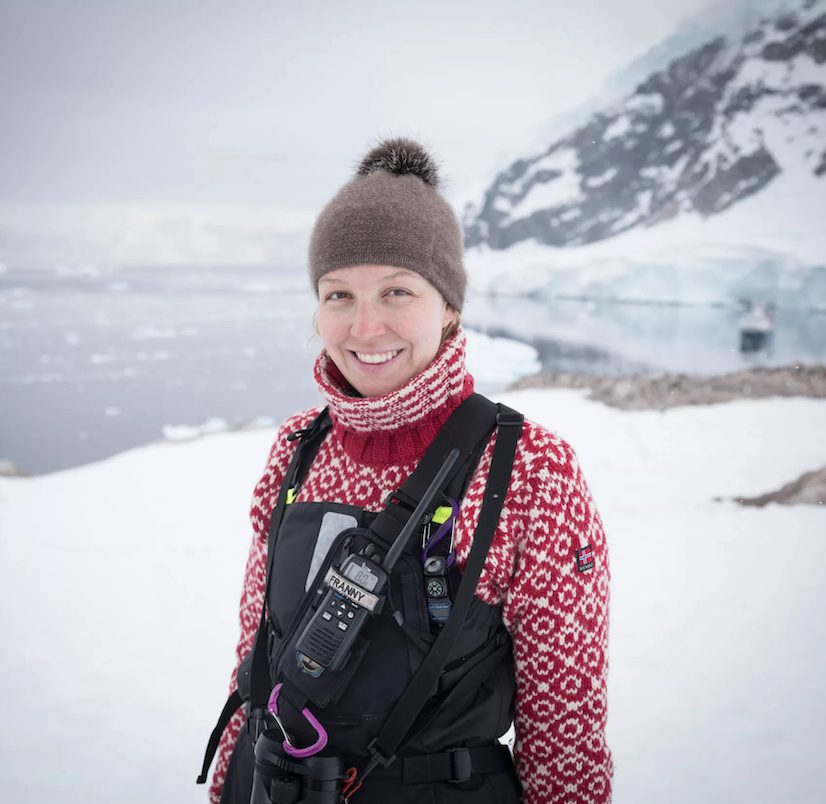
Franny of Wild Women Expeditions
“I think one of the reasons our lives are difficult is because of this separation we’ve insisted on from the rest of the natural world and our insistence on the primacy of human life. Human history is but one dimension of natural history, it’s not the other way around.”
—Barry Lopez, Author and nature writer
10 Expert Travel Tips to Fully Experience the Antarctic
Franny Bergschneider, a lifelong adventurer who now leads expeditions at Wild Women Expeditions, shares her top 10 tips for the Antarctic.
Getting to Antarctica
Most visitors take a ship to reach the Antarctic Peninsula, but it is possible to fly, which a small percentage do. It takes approximately two days by ship to reach Antarctica, and most cruise or expedition ships depart from a gateway port in South America, such as Ushuaia, Argentina, Punta Arenas, Chile or Montevideo, Uruguay. A limited number of cruises depart from Hobart, Australia, or Lyttlelton or Bluff in New Zealand.
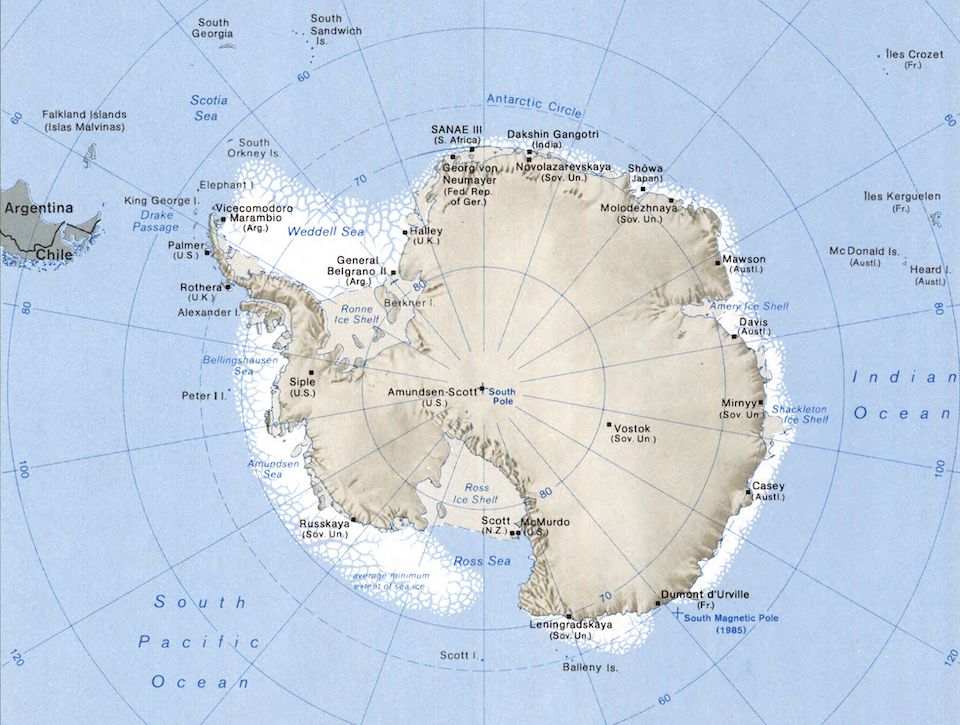

Map of Antarctica / United States. Central Intelligence Agency, Public domain, via Wikimedia Commons
Start Planning Your Arctic Expedition
There are four kinds of ships that are categorized according to passenger capacity:
-
- Traditional expedition ships that carry 13-200 passengers and can make landings
- Mid-size vessels that carry 201-500 passengers and make landings
- Vessels that carry more than 500 passengers and do not make landings (cruise only)
- Sailing or motor yachts that carry up to 12 passengers.
In recent years, several cruise lines have introduced hybrid ships, which reduce harm to the environment. Introduced in 2019 as the world’s first hybrid electric-powered expedition ship, the Hurtigruten line MS Roald Amundsen 500-passenger ship balances using low-sulfur diesel and uses large battery packs to support its low-emission engines, reducing CO2 emissions by more than 20 percent.
French cruise line PONANT ’s Le Commandant Charcot, which can accommodate 245 guests, is the very first luxury hybrid electric polar exploration ship powered by liquified natural gas. There are 123 staterooms, each with its own balcony, and some with jacuzzis and butler service. In 2023, the line will offer Unexplored Antarctica between Two Continents, a 30-day cruise from Argentina to New Zealand, that will “half-circumnavigate” Antarctica along the way, according to the cruise line, starting at $45,000 per stateroom.
While most cruises go to the Peninsula, there are also options to visit the Falkland Islands of Georgia or do an Antarctic Circle trip, which crosses the Antarctic circle at 66 degrees south. Trips last anywhere from 10 days to three weeks, depending where you’re sailing from.
According to Bergschneider, the travel time is time well spent because visitors can decompress from travel, and learn about conservation, the wildlife and the natural environment from experts.
“During those two days, you’re learning about the environment that you’re about to experience, you’re sitting in community with your fellow shipmates, you’re taking time to reflect and shut off from the world before you have this completely consuming experience that is going to change you. Because there’s nowhere else like it in the world,” she says.
“Once you’re there, everything else falls away, because there’s no internet. I always recommend that people actually don’t pay for internet and use this as a complete disconnect. It’s such a special experience because it’s not like any other trip. You’ll be on the ship for the whole time. So, you won’t be moving around hotels, you’ll have your little safe—your little cabin, and you don’t have to make any choices.
But when you’re there, you’re given this gift and this opportunity to disconnect, and you know where the meals are every day, you know that you’re meeting your group before dinner, and you all gather in the main lounge and the information is given about what you’re doing tomorrow. And there’s a daily program, so you’re informed, but you don’t have to worry about the timing, because there’s announcements leading you there. And so, you just go where you’re supposed to, and you show up when you’re supposed to, and then all you have to do is just absorb the experience and take it in, which is such a special gift. Not very often do we have an experience like that.”
When to go
Although some cruise lines offer trips year-round, most travel happens in the Arctic summer, between November and April, when temperatures are between 32 and 41 degrees Fahrenheit.
According to the International Association for Antarctic Tour Operators (IAATO), an organization founded in 1991 to advocate and promote the practice of safe and environmentally responsible private-sector travel to the Antarctic, visitors represent over 100 different nationalities each season, and in 2019-2020, the last full year of available international travel data, the IAATO says that the largest group of visitors to the Antarctic was American (36%), followed by China and Australia (both 11%). Seven percent of visitors were from the UK, and 6% from Canada. (Source: IAATO)
Preliminary estimates from the IAATO in May 2021 suggest approximately 60,000 people are due to visit Antarctica between November 2021 and April 2022. Prior to 2020, IATTO has envisaged continued growth in Antarctic visitor numbers, and expect this trend to continue post-pandemic.
Eyes open in Patagonia: The Breathtaking Consequences of Climate Change
JourneyWoman publisher Carolyn Ray reflects on climate change while at Los Glaciares National Park in Patagonia, Argentina.
More density of wildlife than anywhere on Earth
According to Bergschneider, there’s wildlife everywhere. “Every time you go outside, you’re going to see something amazing,” she says. “In Antarctica, you can go to a penguin colony and you know that you’re going to see penguins there because that’s where those penguins go. They return there every year.”
“The scale of the Antarctic is just so massive that your brain almost can’t process it. There’s no other place like it in the world. It’s like a moonscape. And it’s a complete sensory overload. And the other thing that’s amazing about it is the density of wildlife—and also in South Georgia and the Antarctic Peninsula. The only other place to equal it would perhaps be the Galapagos Islands, but I don’t want to compare the two, because they’re completely different experiences.”
“There are no land-based predators in Antarctica. Everywhere else in the world where you go for wildlife, for example the Arctic or Africa, you won’t be able to get close to those animals because they all have that fear-based reactions because of land-based predators. They’re in survival mode. Animals in Antarctica don’t have that survival, fear-based instinct. There are obviously lots of strict wildlife guidelines—you can’t move yourself towards a creature, an animal, within five meters. But you can get within five meters, which is very close, for example, to seals or penguins, and just observe. And they’re not threatened by you, because they know that you’re not a terrestrial predator. You’re not a threat to them.”
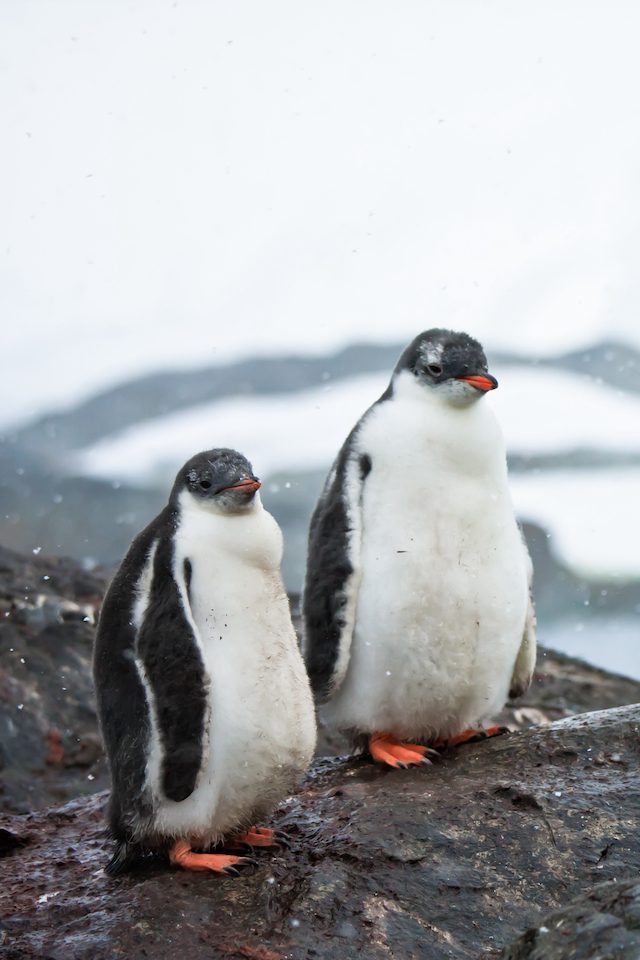

Two penguins stand on the stony coast of Antarctica
Can you leave the ship?
“The rule of thumb is if you want to leave the ship, you have to go on a ship that has 200 people or less.” Bergschneider says. “And then, you’re allowed to land about 100 people onshore at a time. Usually there are two excursions every day, a land excursion or a zodiac excursion. And if the excursion is a land excursion, it also will split the ship into two, half the people will land, half the people will zodiac cruise, and then they’ll swap.”
“For women who are not young, who are my age or older, that I’ve had so many conversations with women who come and they say to me: ‘Seeing you drive this zodiac into the beach at South Georgia made me realize that I’m living in my comfort zone and I need to step out of it more often.’ And that—it gives them that opportunity to feel safe and empowered to take risks and take up space and get out of their comfort zone and do those things that they’ve always wanted to do.”
Drake shake or Drake Lake?
On our call, many women expressed concern about seasickness and having that ruin their trip. There were questions about flying to Antarctica. According to Bergschneider, flying the Drake is an option only if you have a certain amount of time, like a week.
“This is a once in a lifetime trip,” she says. “People plan this trip five years in advance sometimes, so, if you have to fly the Drake because of timing, that is understandable, or if you just have extreme anxiety that you can’t function because you’re worried about the Drake passage. However, I would encourage people whenever possible to sail the Drake. Because it’s the experience, it’s like you’re living in the footsteps of these explorers. They didn’t do it with the equipment we have, but the remoteness of the place sinks in.”


Cory Lee during his visit to Antarctica
Can you still have the full experience with mobility issues?
Some women on our call have recently had hip replacements and were concerned about getting in and out of zodiacs. “There are staff to help you, and we’re always doing the sailor grip when you’re in and out of the zodiac,” Bergschneider says.
For another perspective on mobility, I asked travel writer Cory Lee about his travels to the Antarctic in January 2020 with Holland America. Since it was a larger ship (over 500 people), he couldn’t set foot (or wheel) on it.
He says: “When I rolled out of my stateroom and went outside to view the beauty of Antarctica for the first time, I was in disbelief. I had never seen anything quite so spectacular. There was a huge mountain of ice and it towered above the cruise ship. Tears filled my eyes and I became overwhelmed with emotion at the fact that I actually made it to my seventh continent. My journey to reach all seven continents certainly wasn’t an easy one, but in that moment, I immediately knew that it was worth it.
Antarctica as a wheelchair user may sound like a crazy idea to most people. It’s a journey that requires endurance, a willingness to go where relatively few have gone, and a tough stomach if you’re crossing the Drake. But for those who choose to forge ahead and visit Antarctica anyway, it is truly the experience of a lifetime and it’s one that I’ll certainly never forget.
I saw sights that were more spectacular than anything I’ve ever laid eyes upon. I saw more whales, penguins, and seals than I can even count. And I truly had the experience of a lifetime. I honestly don’t feel like I missed out on anything by not going ashore.”
How does the Antarctic differ from the Arctic?
“The Antarctic is sensory overload, it’s overwhelming,” says Bergschneider. “The landscape is ginormous and beautiful, and it is, like, that moonscape. And so, you’re just completely absorbed in it.”
“The North Pole is water and ice surrounded by land. And the land is owned by different countries, so there’s the Canadian Arctic, the Russian Arctic, like, Alaska, Norwegian Arctic, Iceland, Greenland, all those places. And so, they all have, like, land in the Arctic. But the North Pole is sea ice, the solid sea ice that’s shifting and moving. So, there’s no land. Whereas the Antarctic is land and ice surrounded by water. And in the winter, the continent will actually grow double in size because the sea ice will freeze around it.
And what’s really exceptional about Antarctica is there’s no Indigenous population. So, everywhere else in the world, there is an Indigenous population except Antarctica. It’s inhospitable in the winter, so no one can really survive there. Some people would live on a base, like McMurdo or over wintering bases, and many people don’t spend the winter there. A few people do, but not many. And it’s a continent that is dedicated to its values—nobody owns it, and it’s dedicated to peace, science, and conservation.”
Resources
Curious about your cruise or expedition ship operator? The Association of Arctic Expedition Cruise Operators (AECO) works for responsible, environmentally friendly and safe expedition cruise tourism in the Arctic. To search for members visit this link.
Check out the wildlife guidelines from the IAATO: Among other things, this includes regulations and restrictions on numbers of people ashore; staff-to-passenger ratios; site-specific and activity guidelines; wildlife watching and emergency medical evacuation plans. More than 100 companies and organizations from across the world are members and adhere to the principle that “planned tourism activities will have no more than a minor or transitory impact on the Antarctic environment.” For visitors, it also publishes guidelines on everything from waste to seal watching. Check them out here.
More Once-in-a-Lifetime Travel to Inspire You
Confessions of a Wannabe Aurora Chaser: The Myths and Magic of the Northern Lights in Norway
Meet Hurtigruten’s Chief Aurora Chaser, Tom Kerss, who teaches wannabe aurora chasers how to experience the Northern Lights in Norway.
Getting Real About Spain’s Camino with Jane Christmas and “What the Psychic Told The Pilgrim”
Jane Christmas’s funny memoir of her 780-kilometre trek across Spain on the Camino de Santiago to celebrate her 50th birthday and midlife.
Searching for Awe? Don’t Miss Bora Bora
Located in French Polynesia, Bora Bora is a magical ocean paradise well worth the trip, even for women in their 80s.




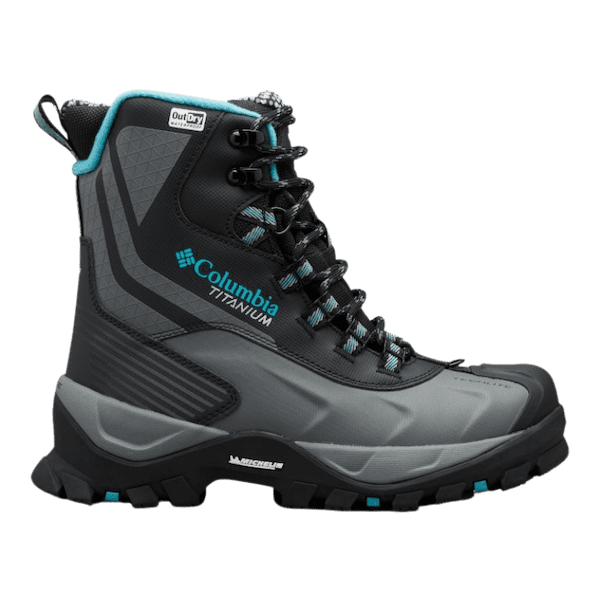



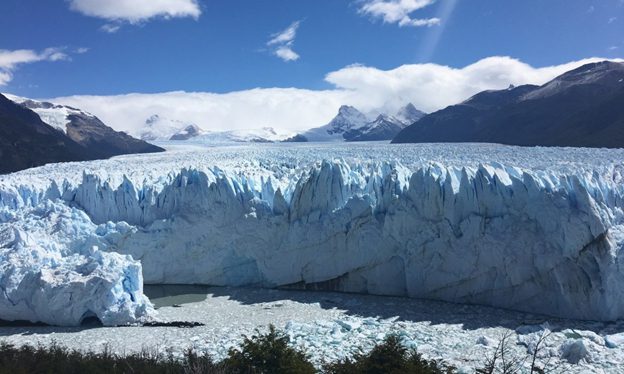
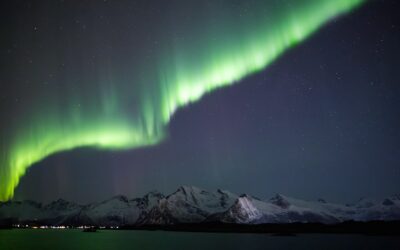

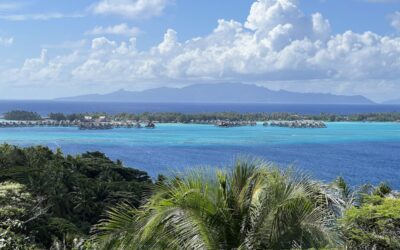
As you know, I’ve just returned from Antarctica myself (I was with my husband). It is a journey, if possible, everyone should take. Crossing the Drake was something I was concerned about since I am prone to motion sickness. I purchased a Relief Band http://www.reliefband.com and it was worth every penny. Much better than typical sea bands. I was a little heady as we first crossed and didn’t have dinner that night-simple consume soup. Was find the rest of the time. And it is so very beautiful there. Haven’t lived until you’ve had a ‘conversation’ with a chin strap penguin!
Be sure to include Quark Expeditions with their new ship visiting Antarctica
Exceptional.